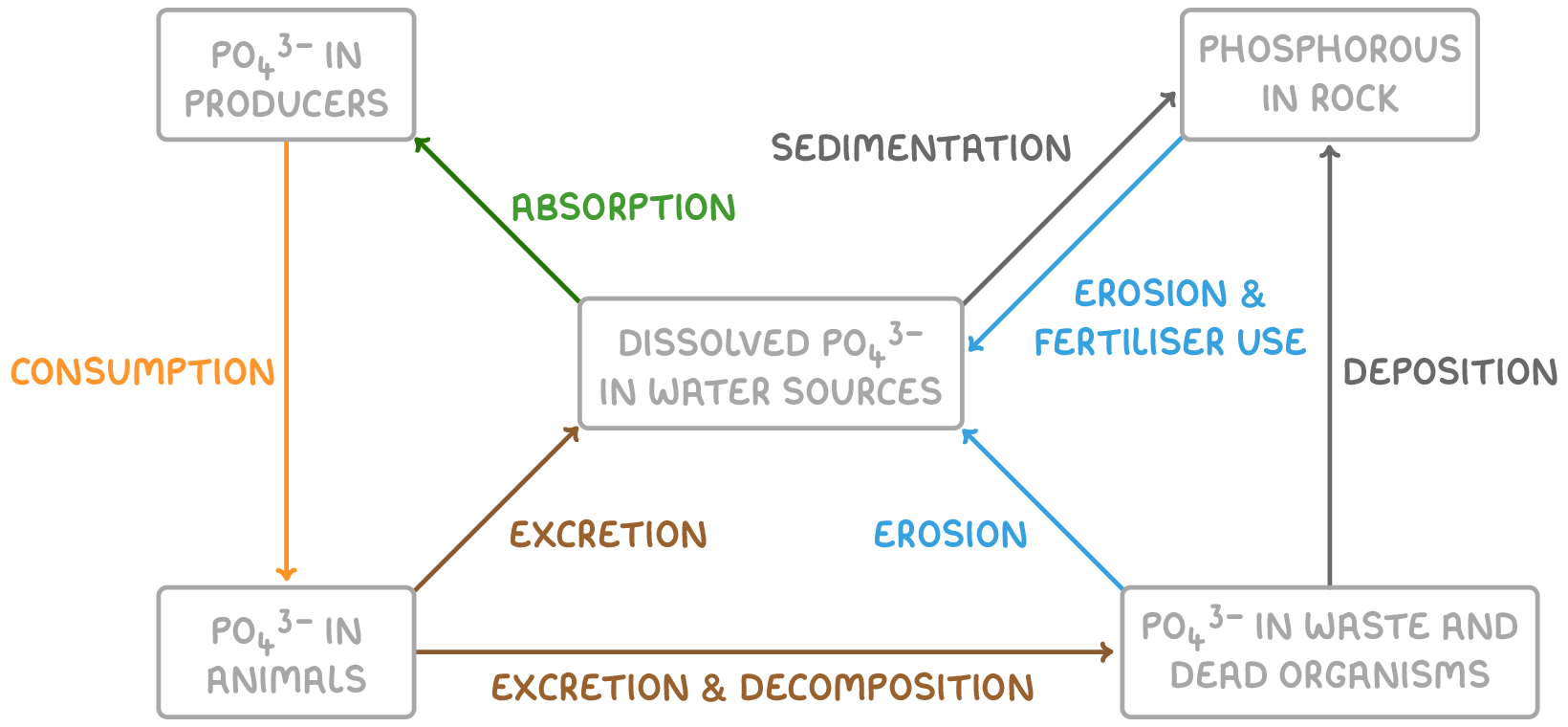Phosphorus Cycle
This lesson covers:
- Why phosphorus is important
- The movement of phosphorus through ecosystems
- The role of mycorrhizae in ion uptake
Why is phosphorus important?
Phosphorus is a crucial nutrient required by all organisms.
It is required for the formation of key biological molecules:
- Phospholipids
- Nucleic acids (DNA and RNA)
- ATP
In the non-living environment, phosphorus is mainly found bound to sedimentary rock deposits. Phosphorus mainly exists in other living parts of ecosystems as phosphate ions (PO43-) dissolved in water.
The movement of phosphorus through ecosystems
The phosphorus cycle describes the movement of phosphate through ecosystems, linking living and non-living components. This cycle incorporates several processes that facilitate the recycling of phosphorus, a resource that is often limited in availability.

Key steps of the phosphorus cycle:
- Weathering - Erosion of rocks releases phosphate ions into soil and water, making them available for uptake by producers.
- Fertiliser use - Phosphorus-rich fertilisers may leach into water sources.
- Absorption by producers - Plants, with the help of mutualistic mycorrhizal fungi in their roots, and algae absorb phosphate ions from the soil or water.
- Consumption - Phosphates are transferred through food chains when organisms consume other organisms.
- Excretion and death - Phosphates exit organisms when they die and via their waste products.
- Decomposition - Saprobiontic organisms, like bacteria and fungi, break down dead material, releasing phosphate ions for reabsorption by producers.
- Sedimentation and deposition - Phosphates in water sources, waste, or dead organic matter accumulate and reform sedimentary rocks.
Seabird guano is a common mechanism that transfers phosphates from the ocean to land.
The role of mycorrhizae in ion uptake
Mycorrhizae are associations between certain types of fungi and the roots of plants. Many plants have symbiotic relationships with mycorrhizal fungi, increasing their ability to absorb critical and scarce soil nutrients like phosphates and nitrates.
Benefits of mycorrhizae:
- They increase the root surface area via extensive fungal networks for efficient absorption of water and mineral ions, increasing the efficiency of nutrient cycles.
- They retain more moisture and minerals in the roots, helping the plant resist drought.
- Plants supply the fungi with organic compounds like sugars and amino acids, creating a mutually beneficial relationship.
The mutually beneficial relationship between plants and fungi through mycorrhizae is called mutualism.